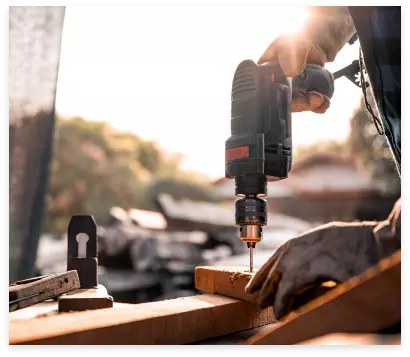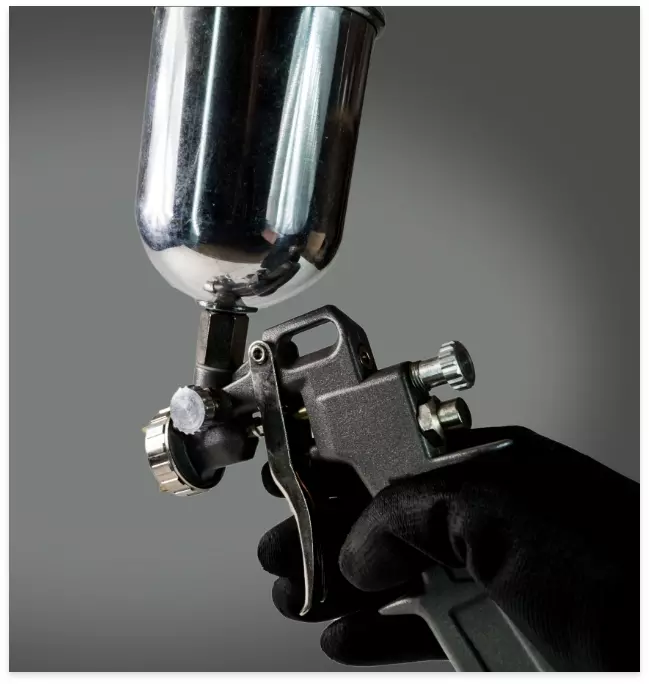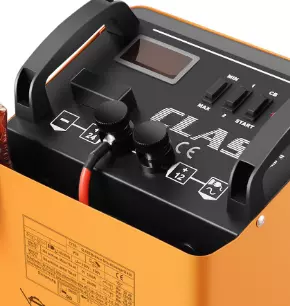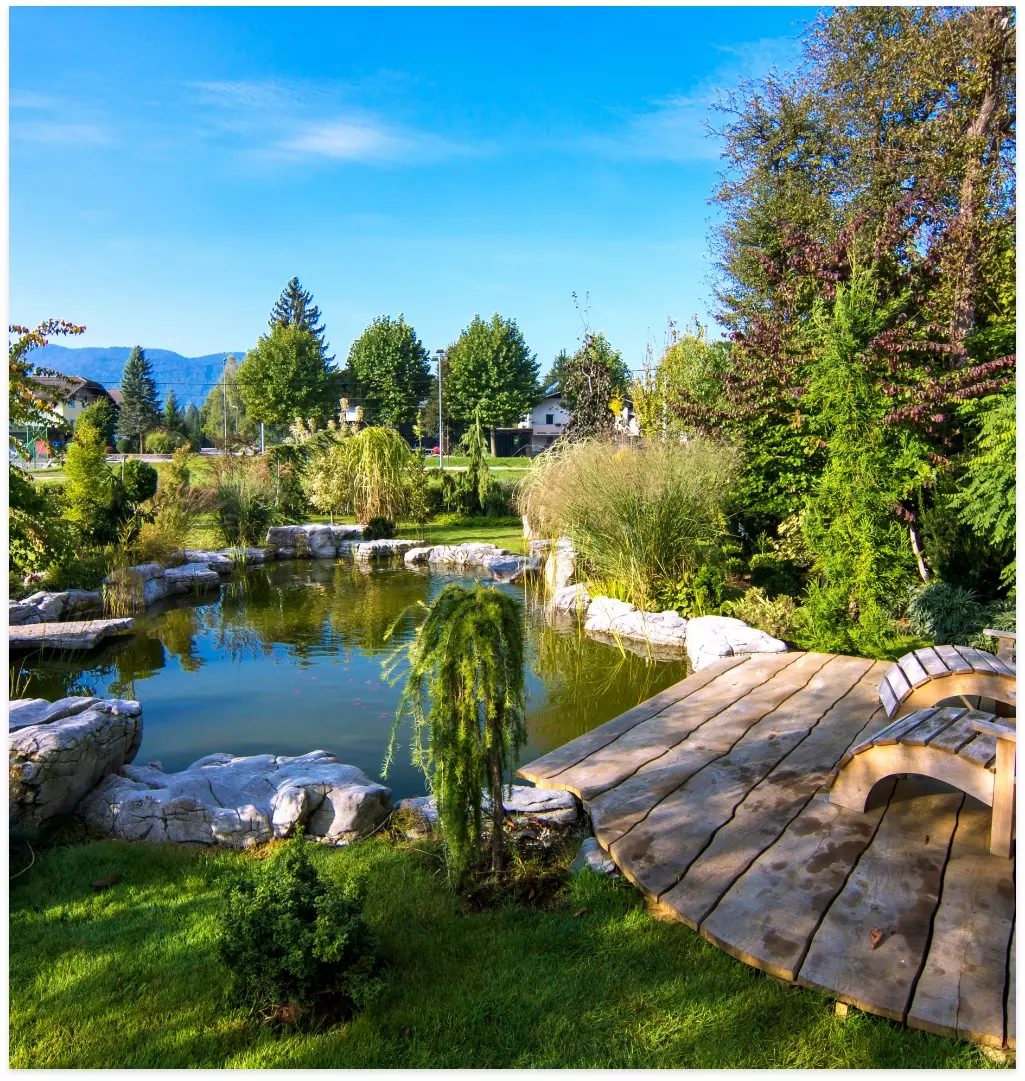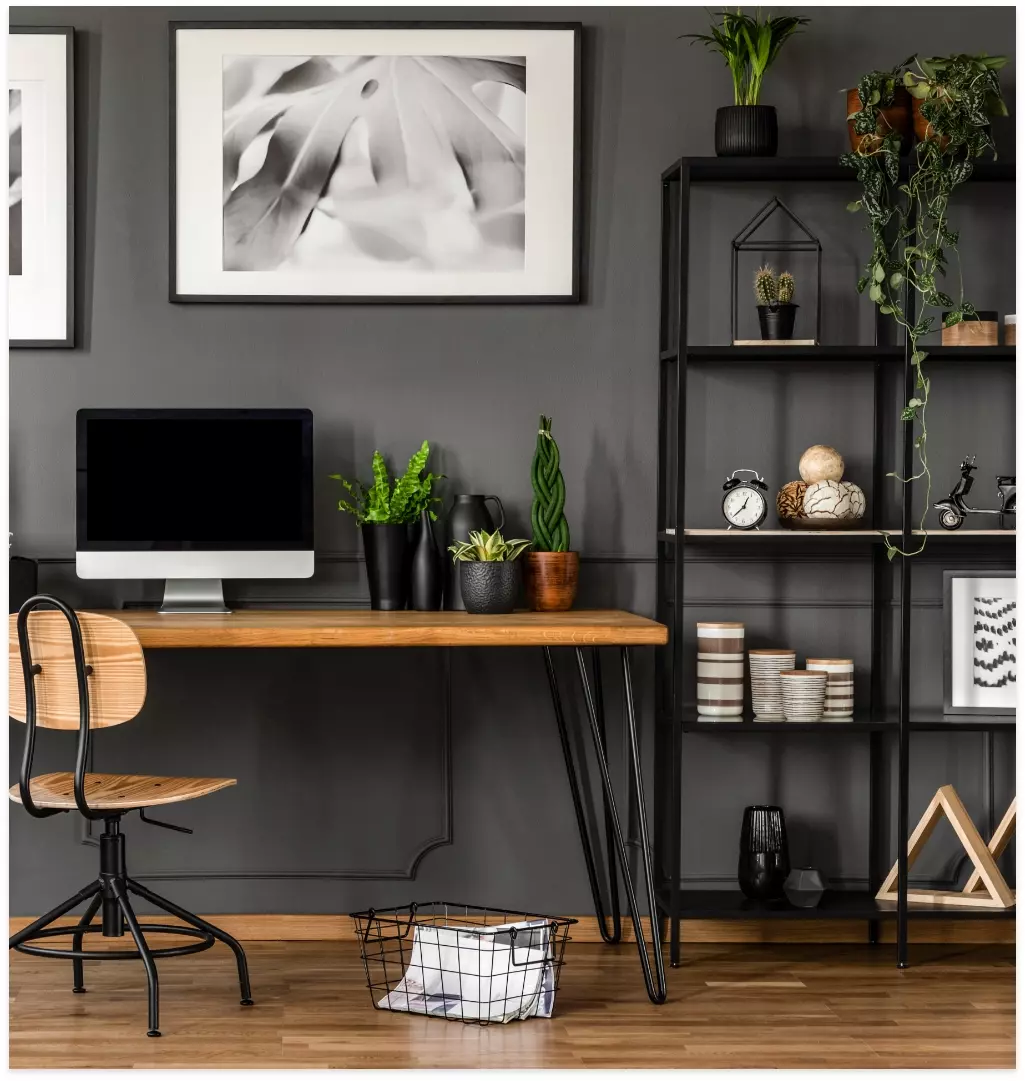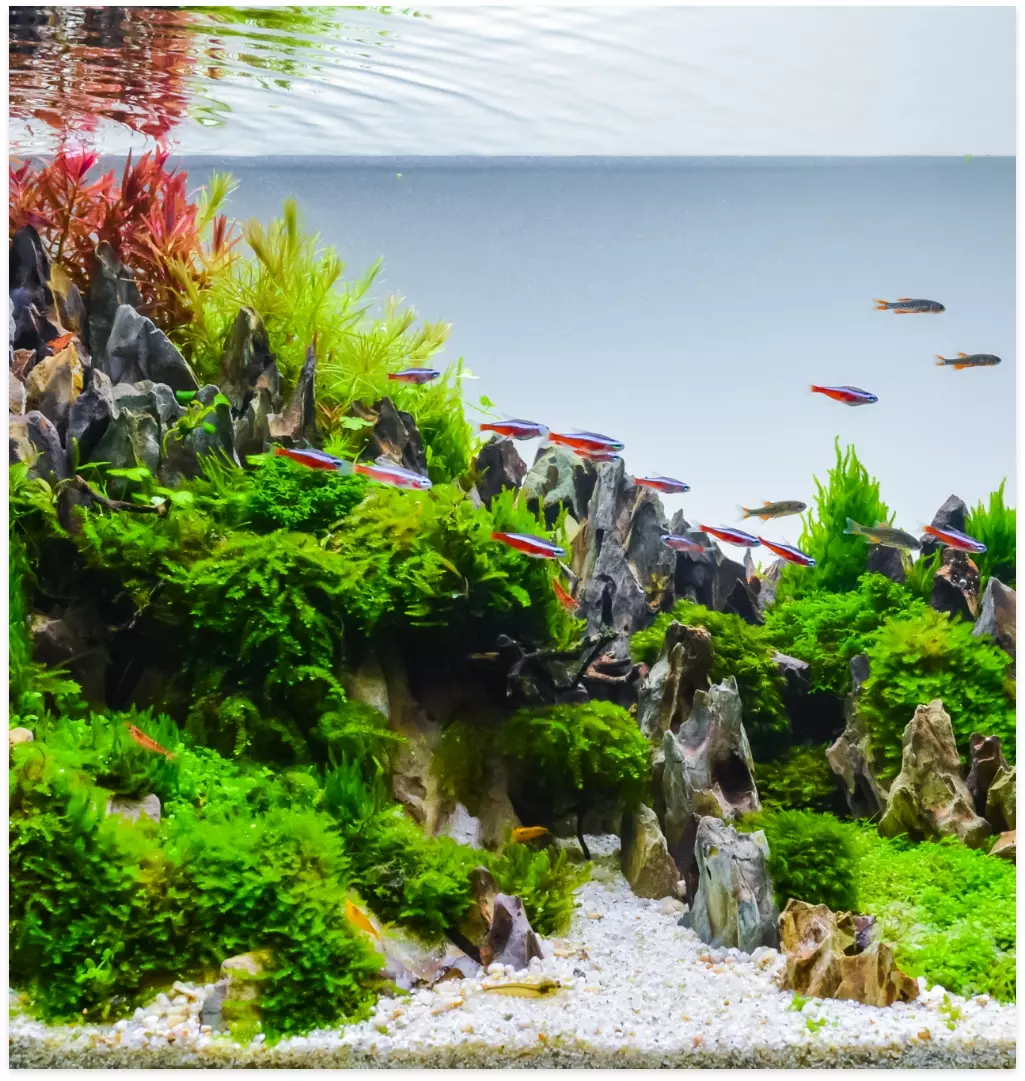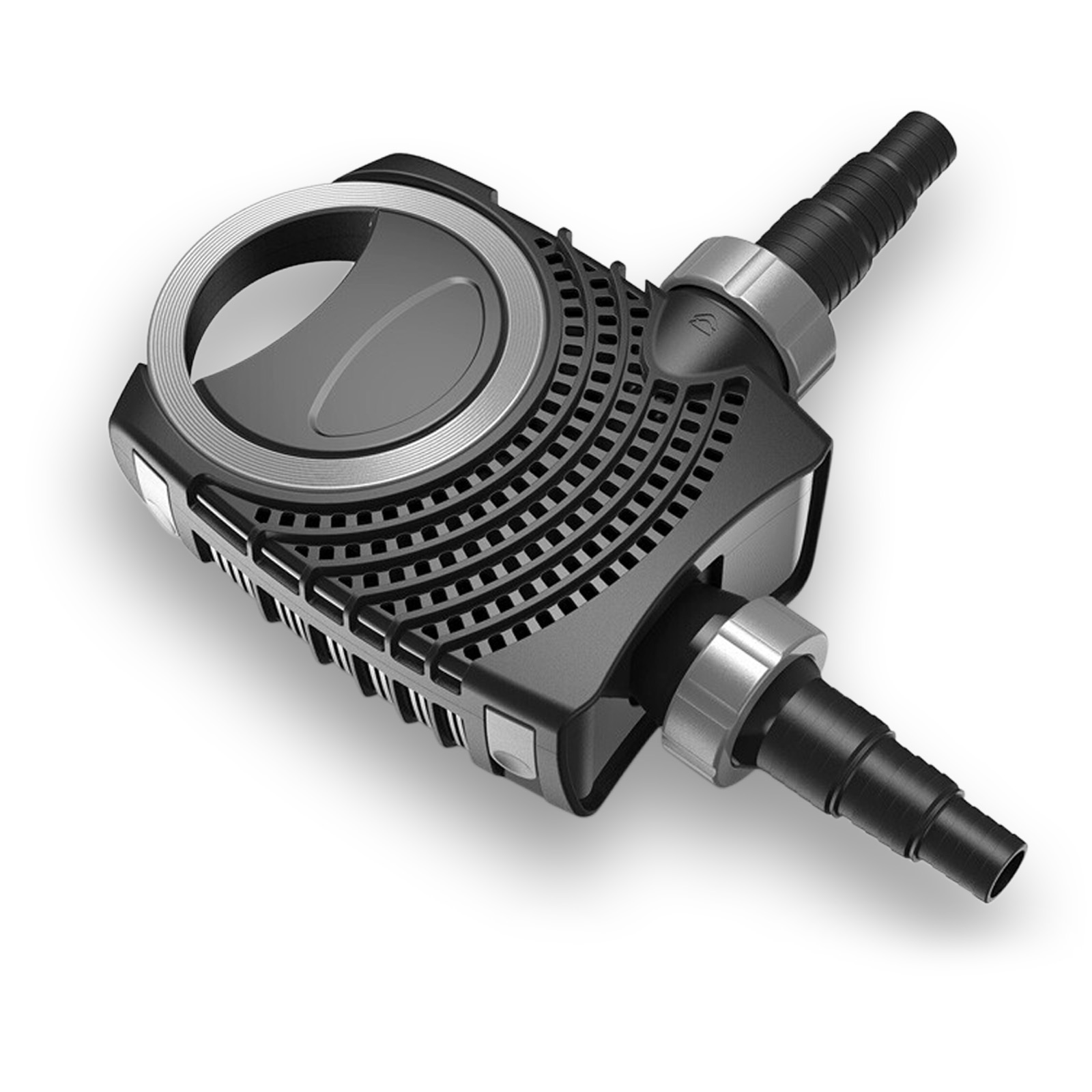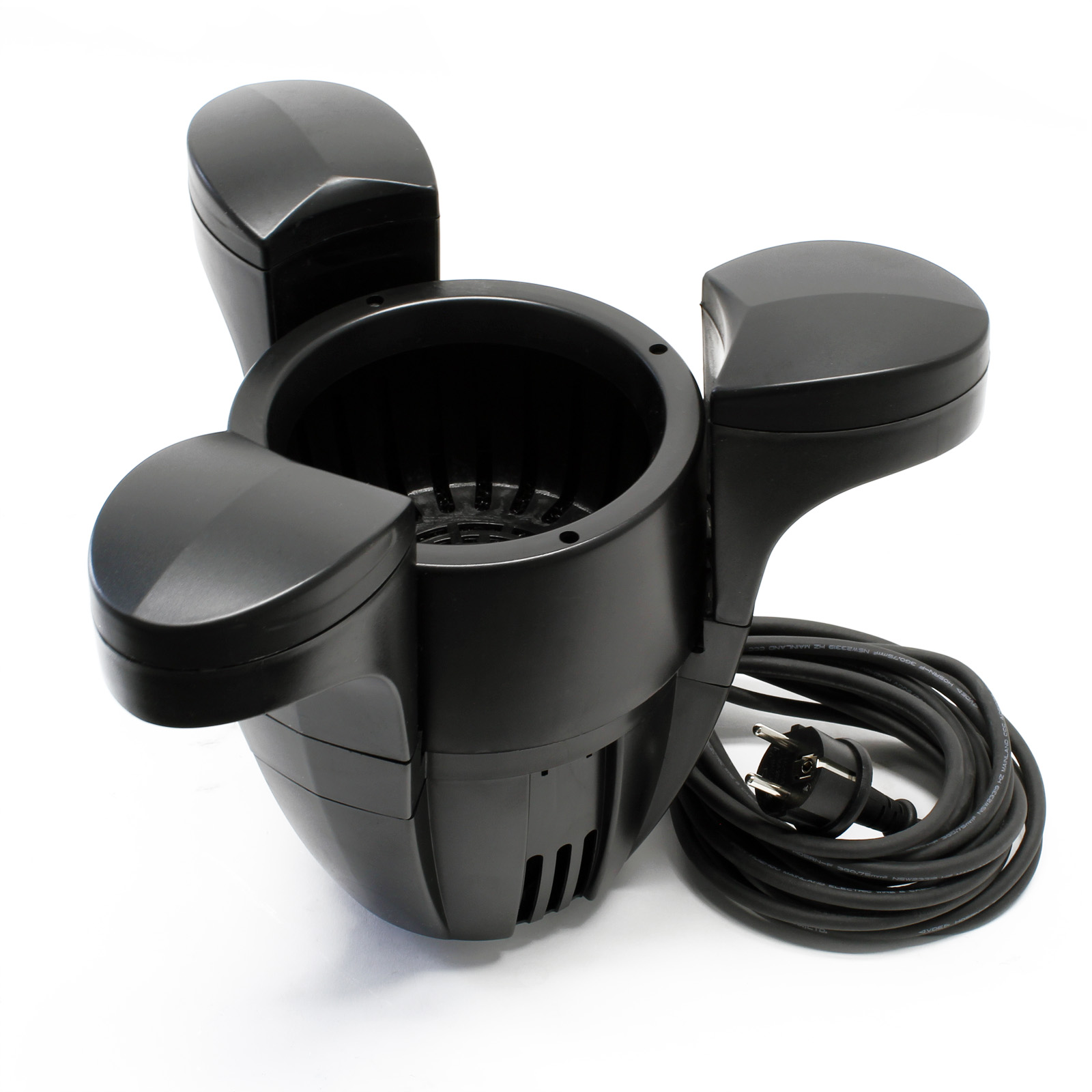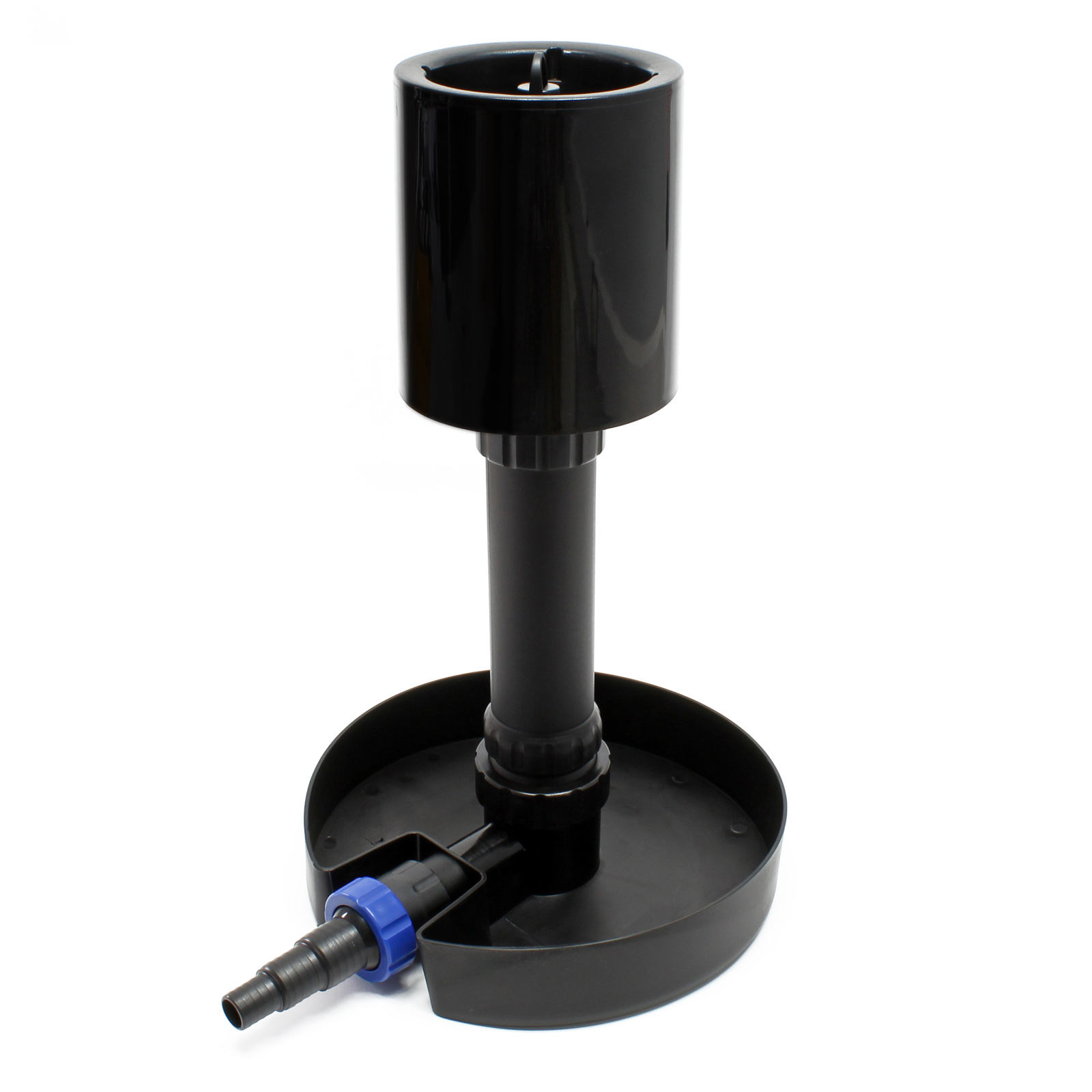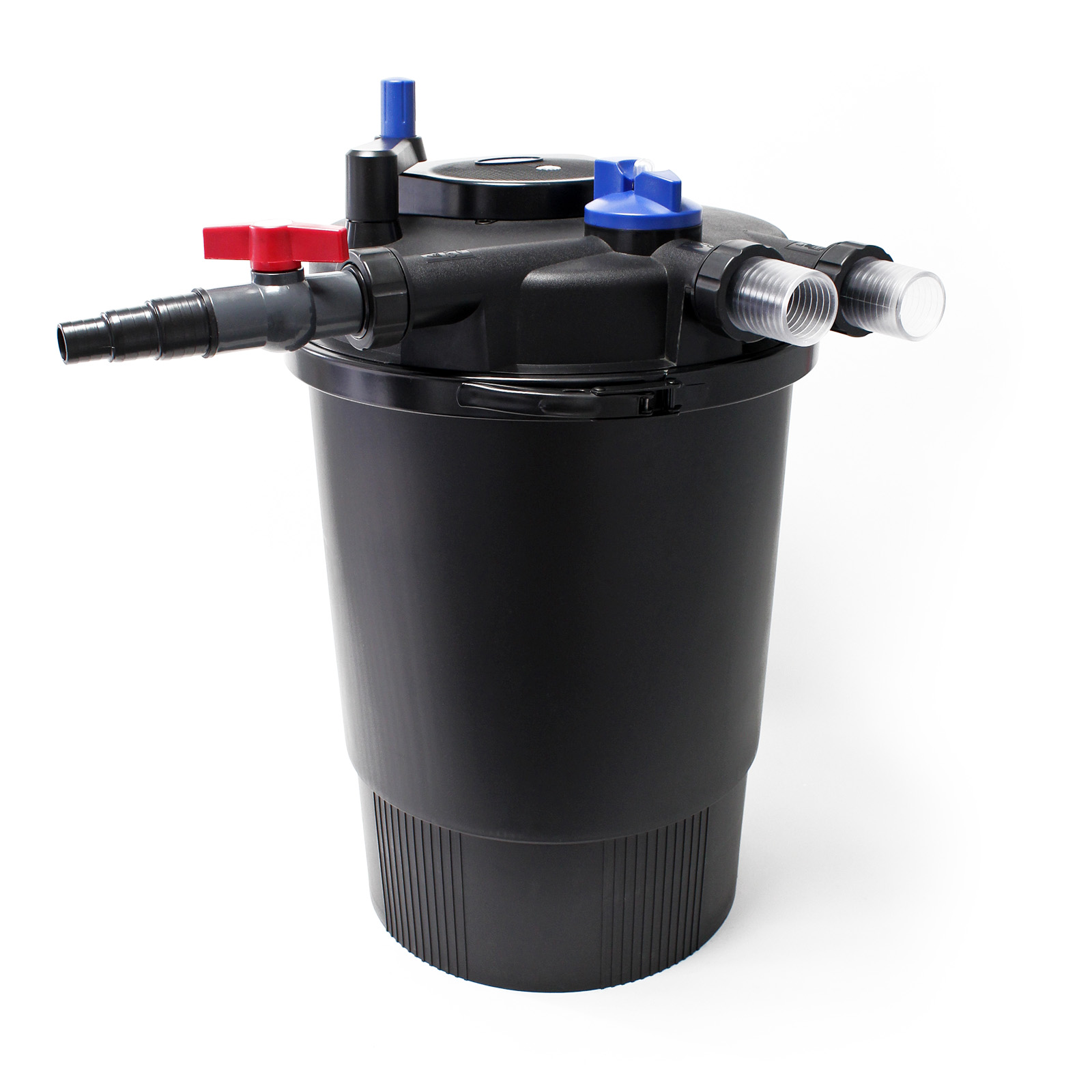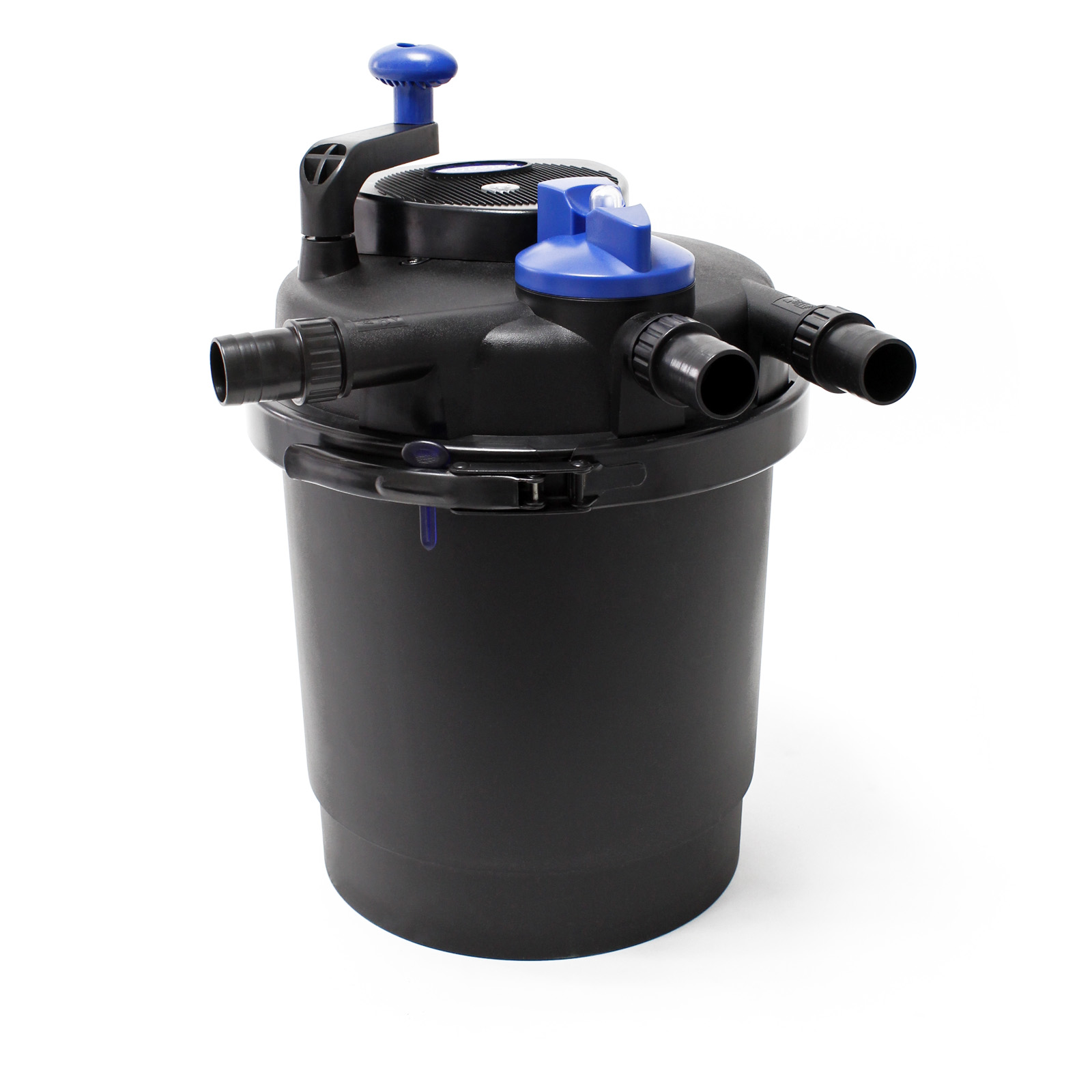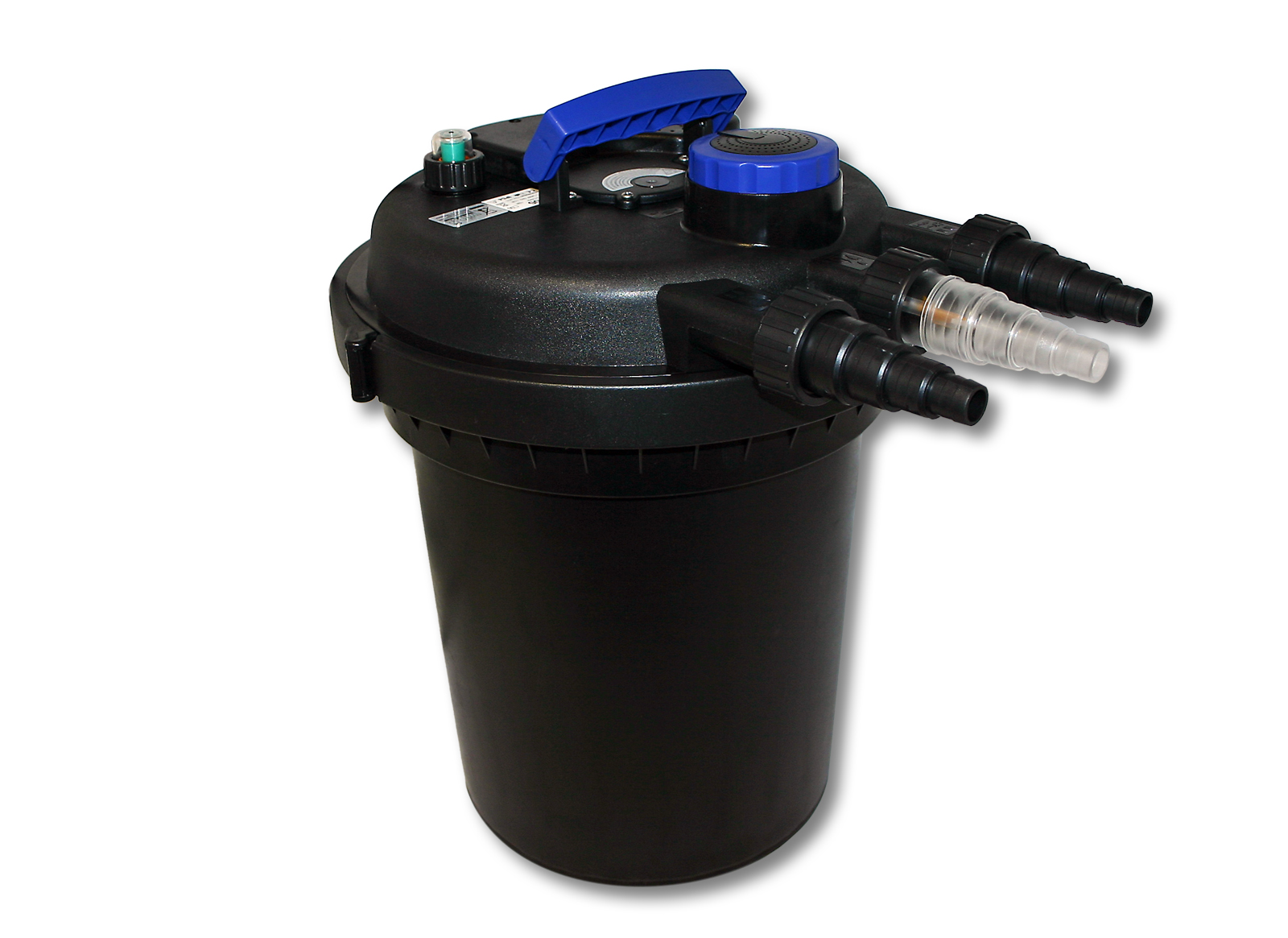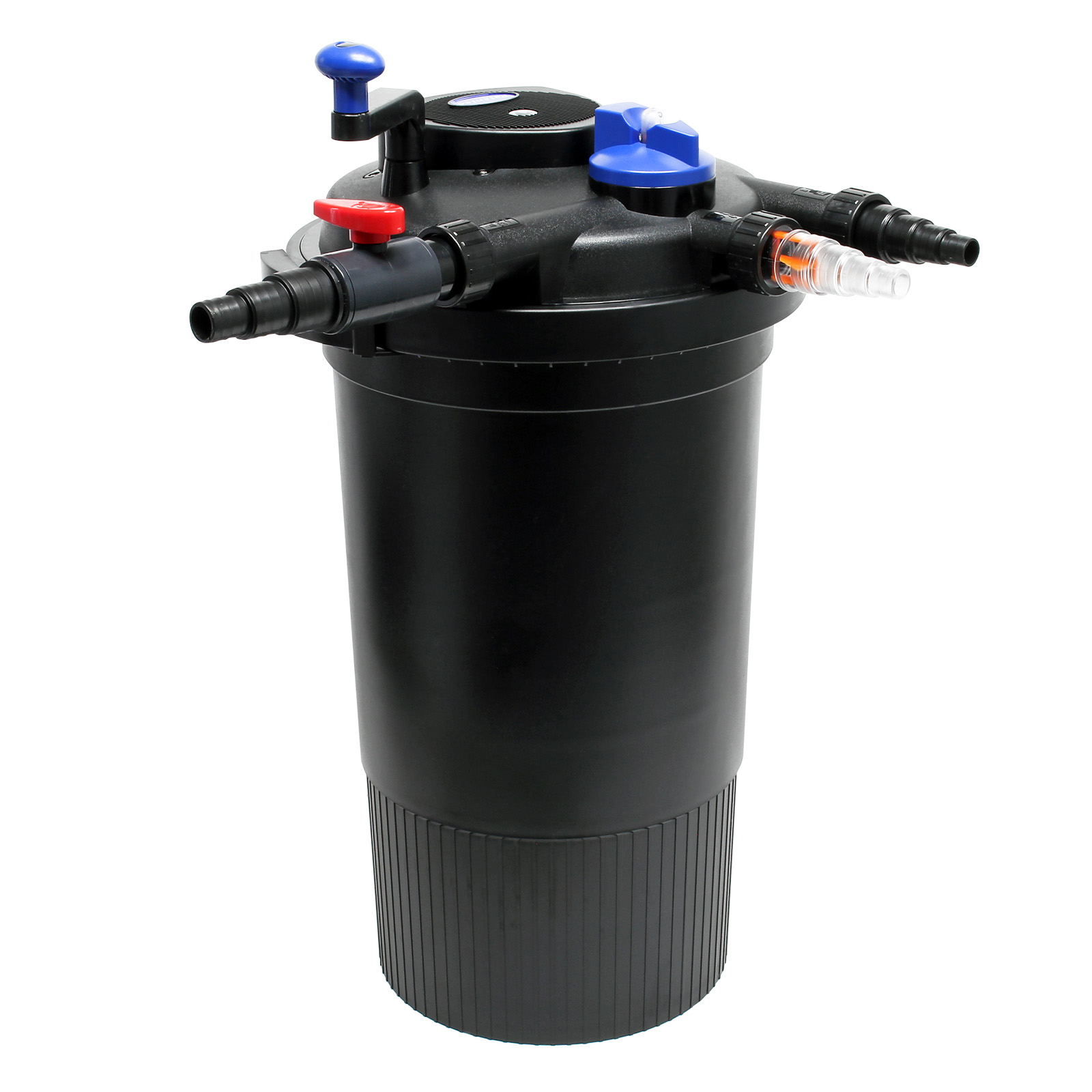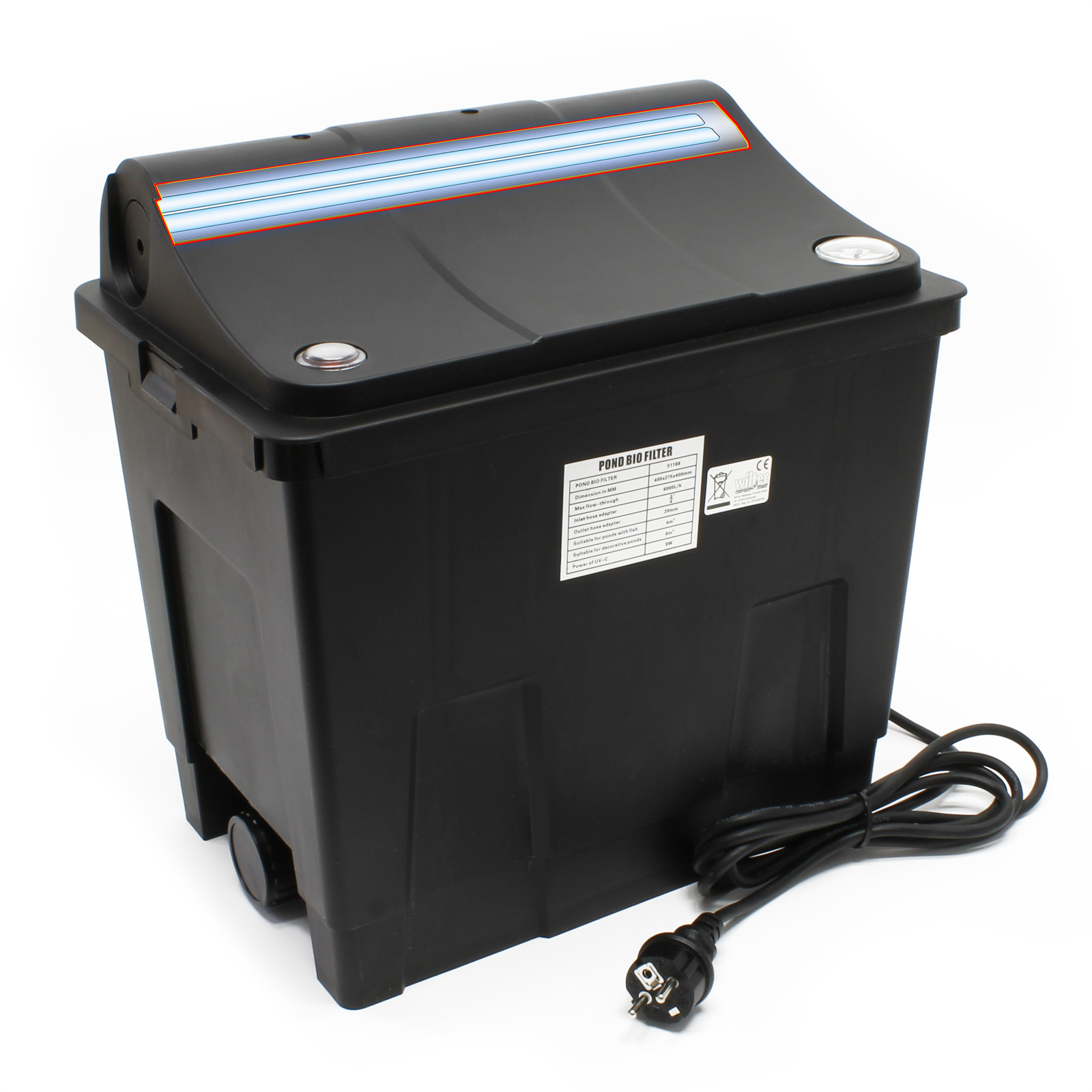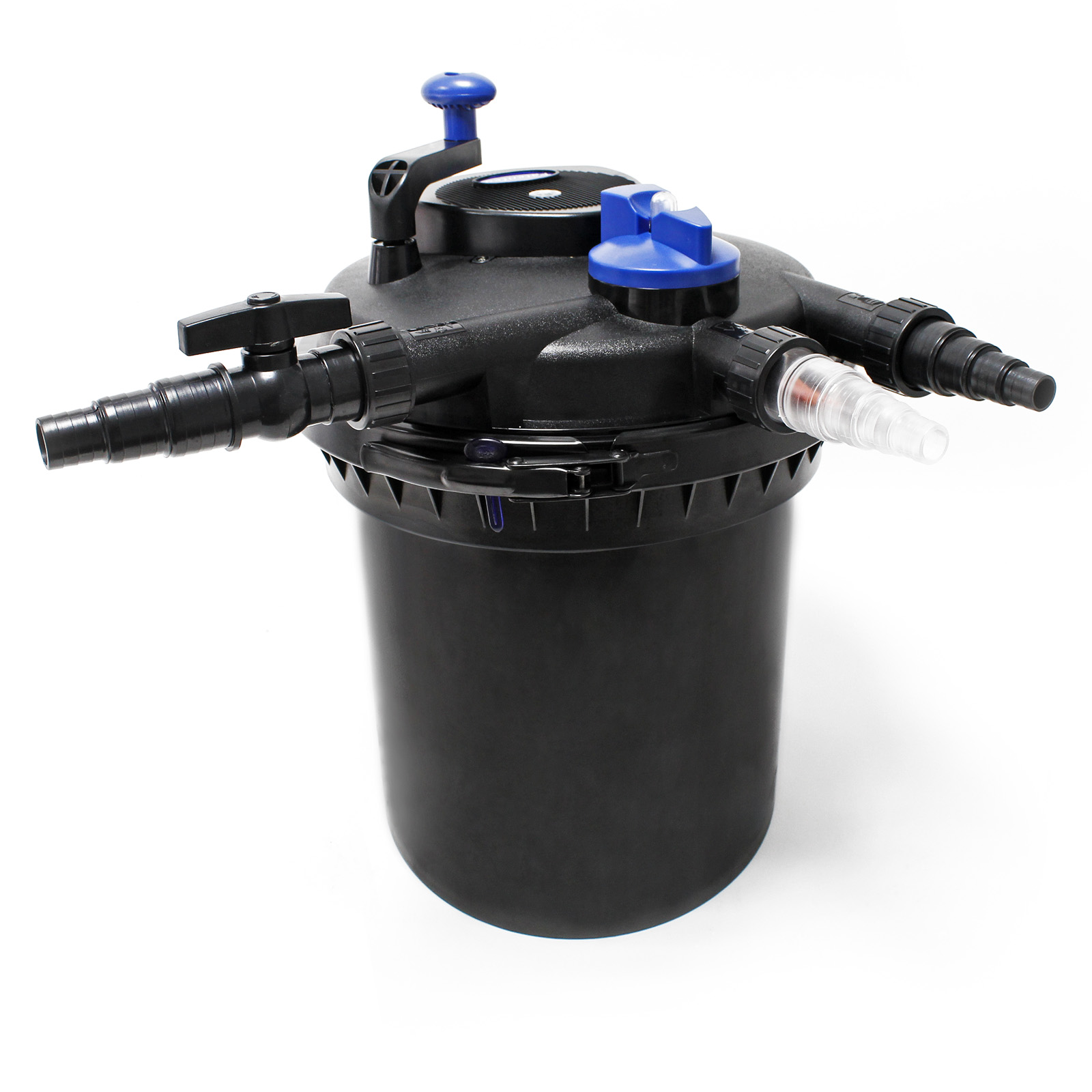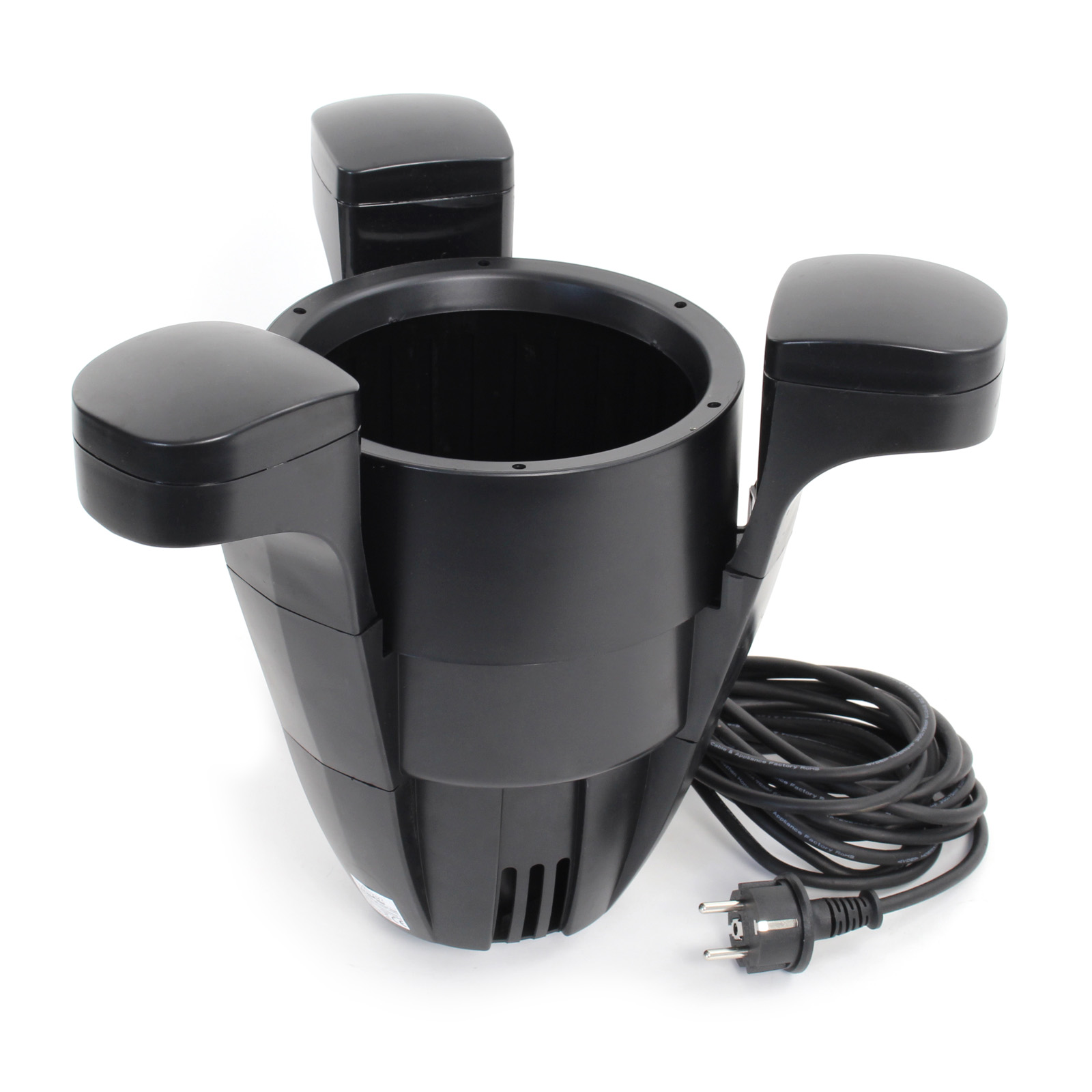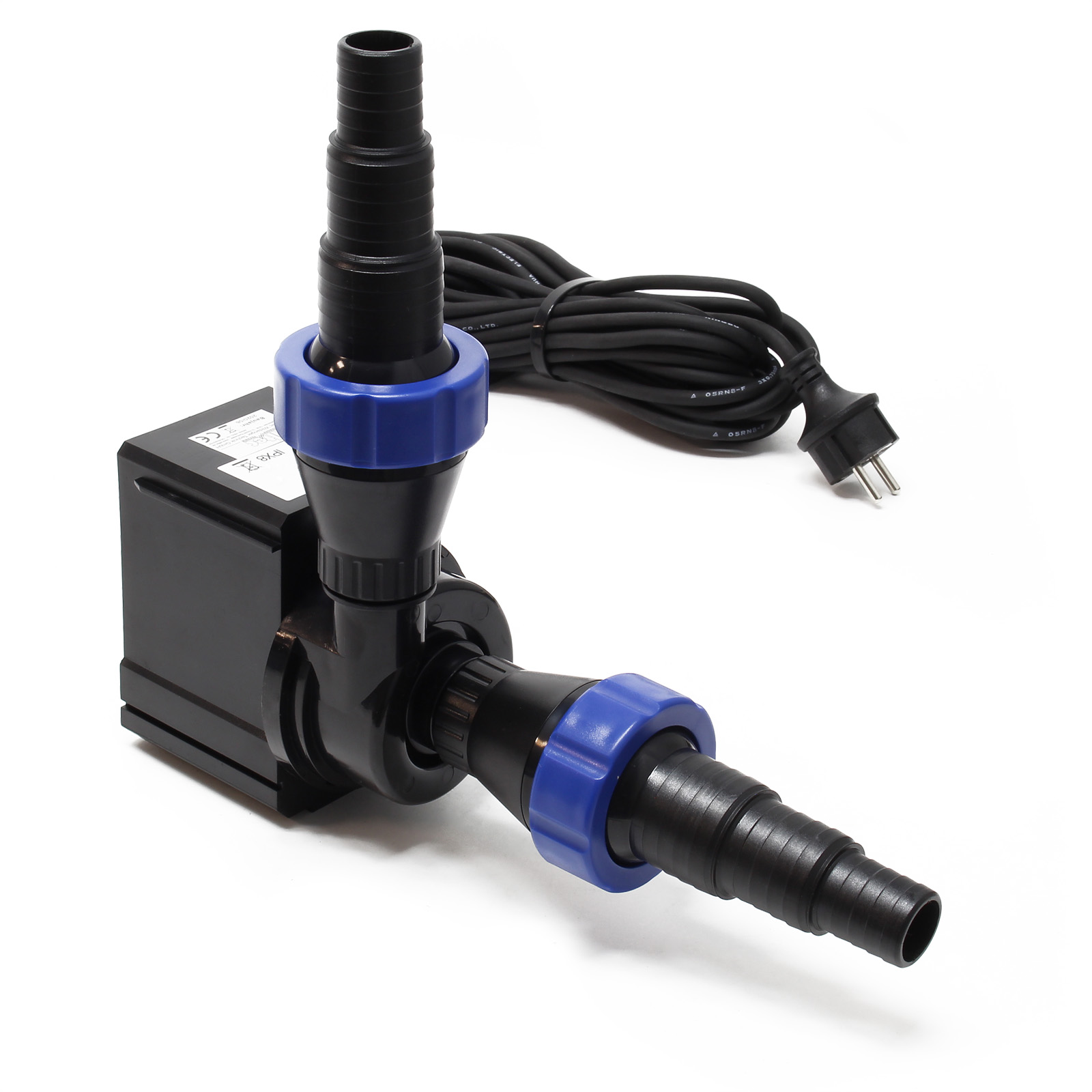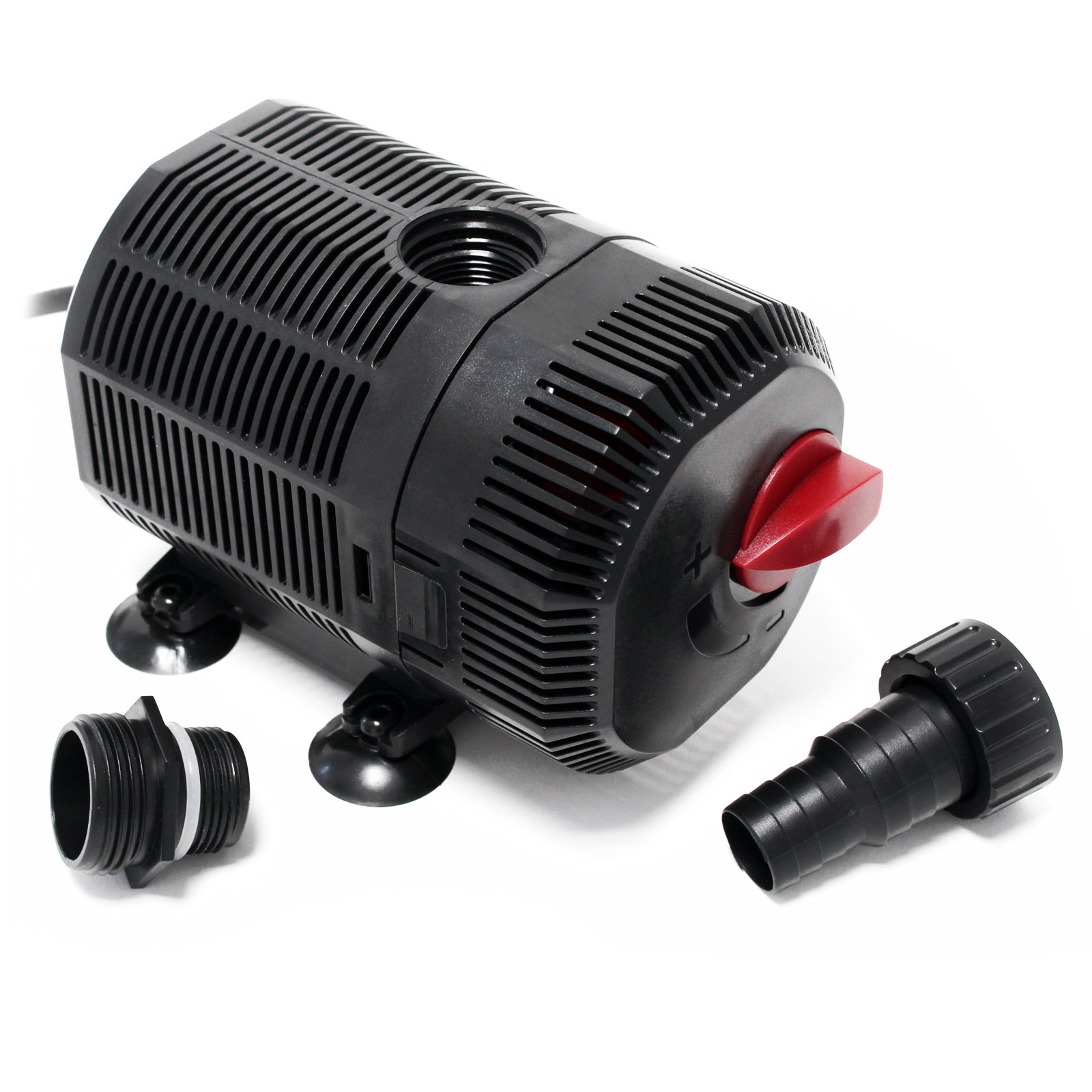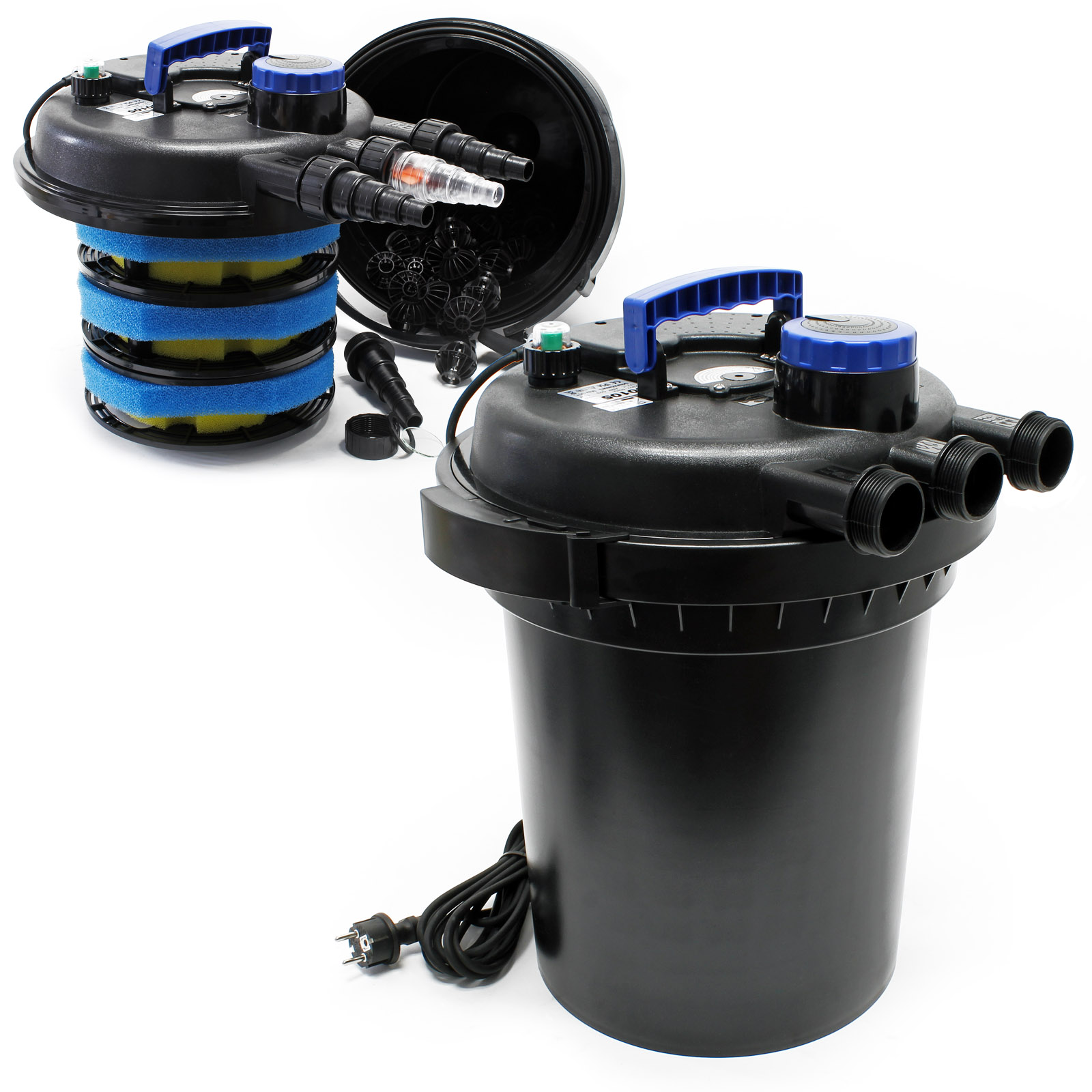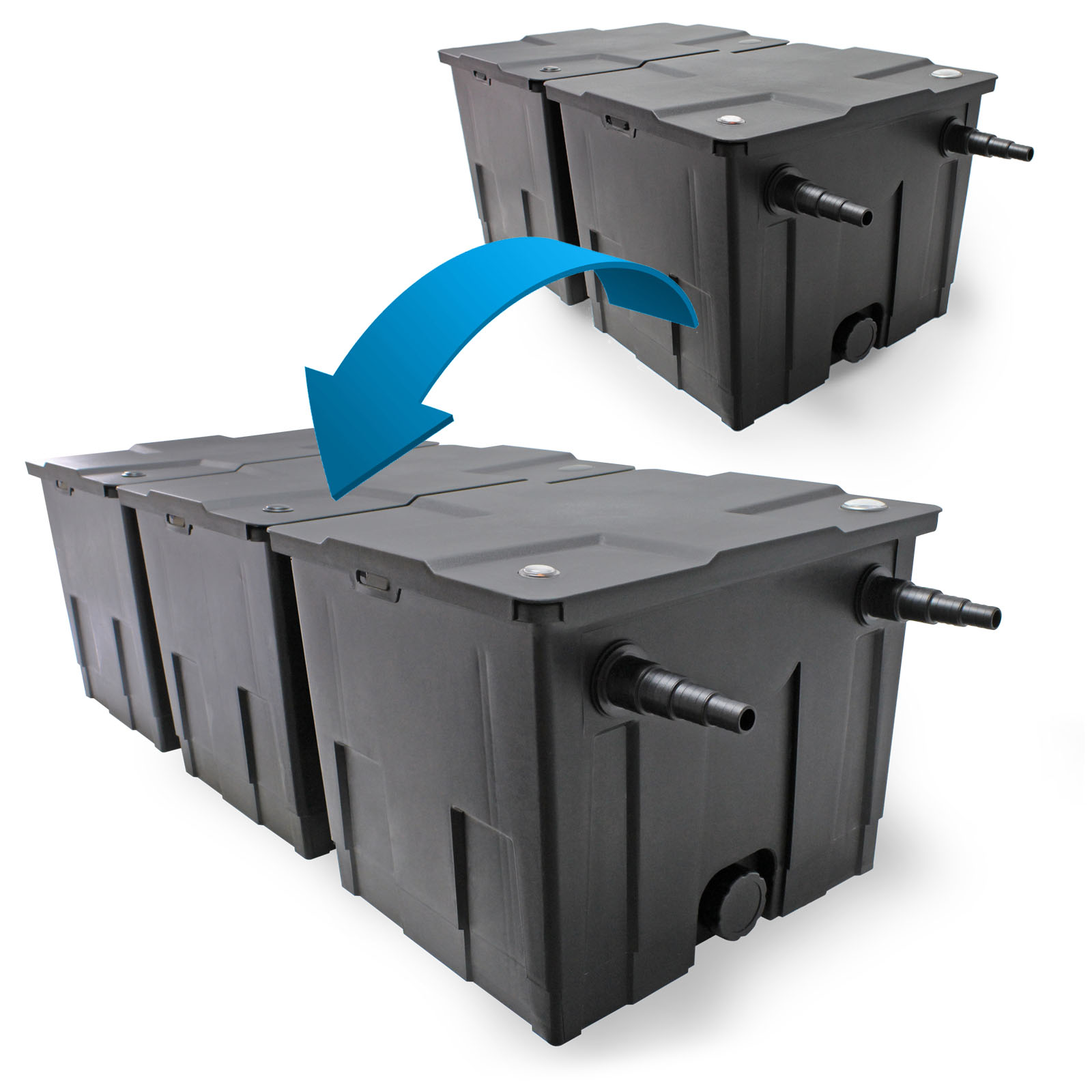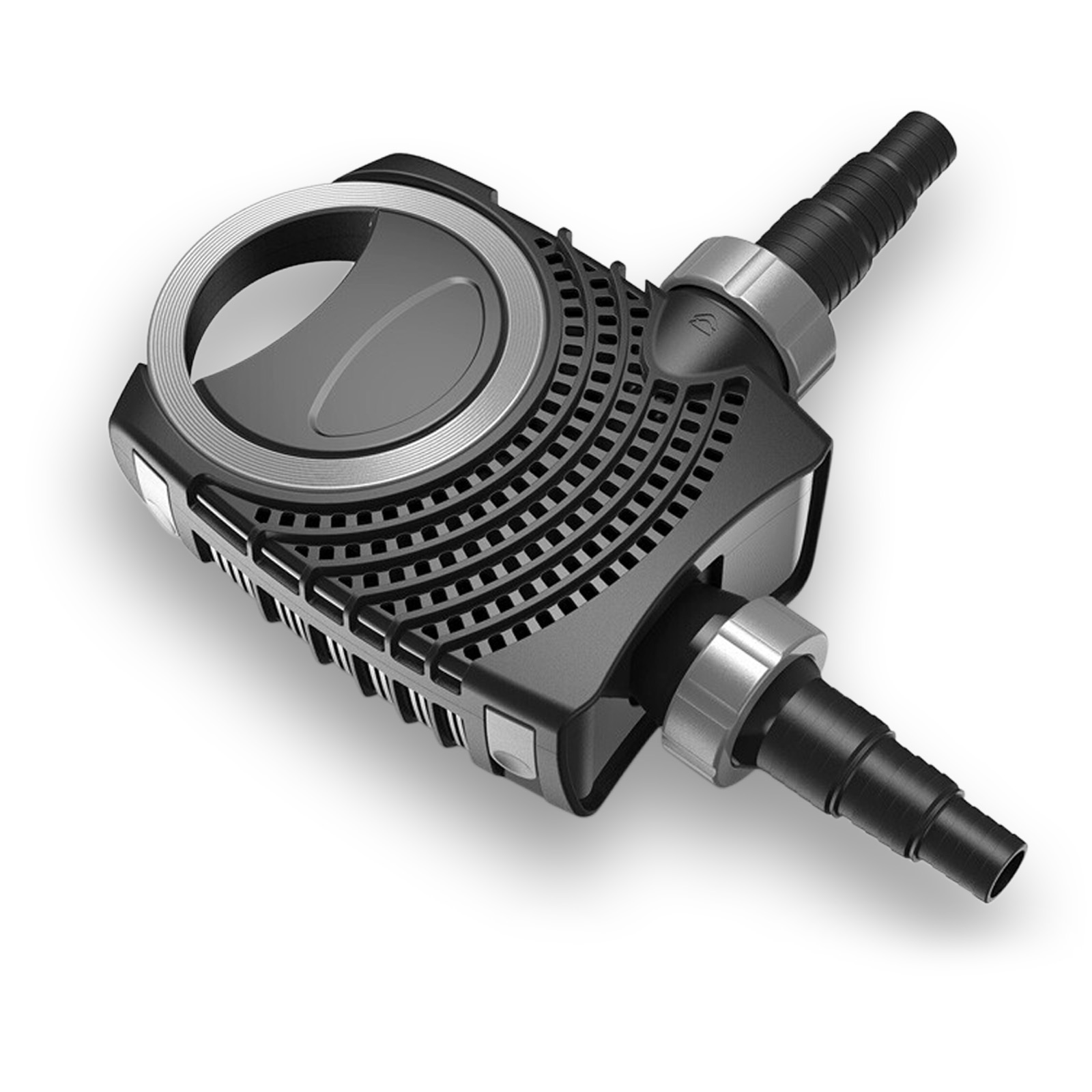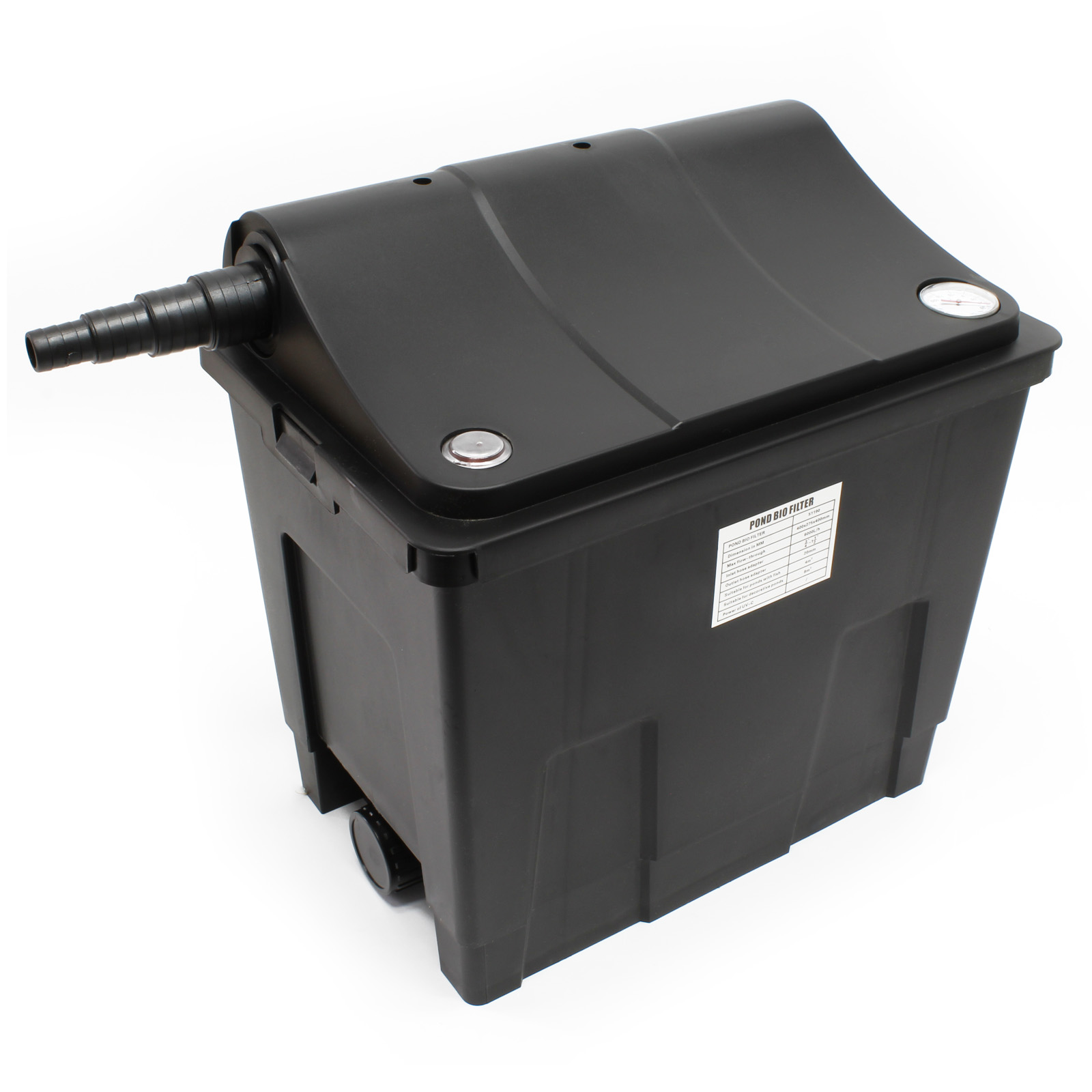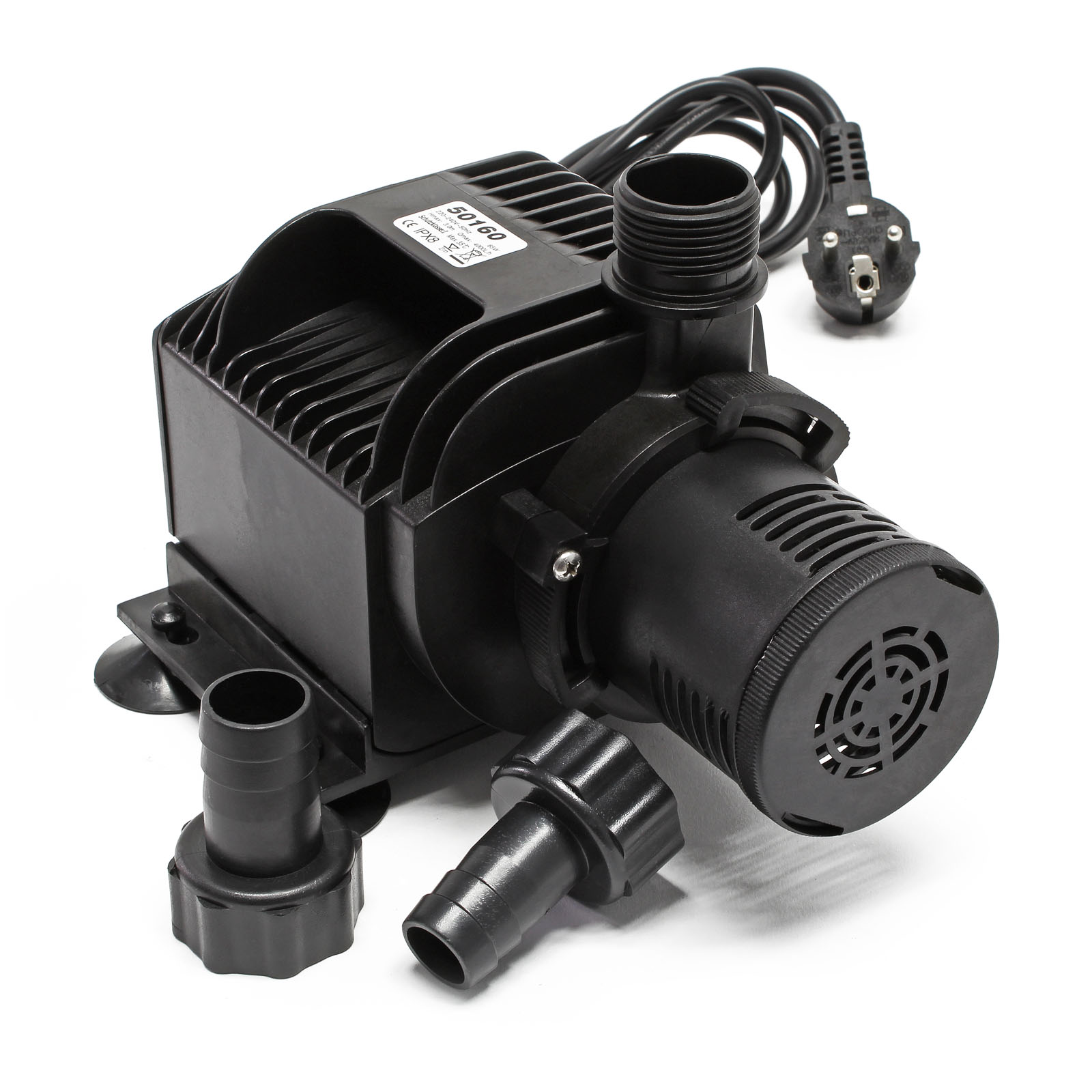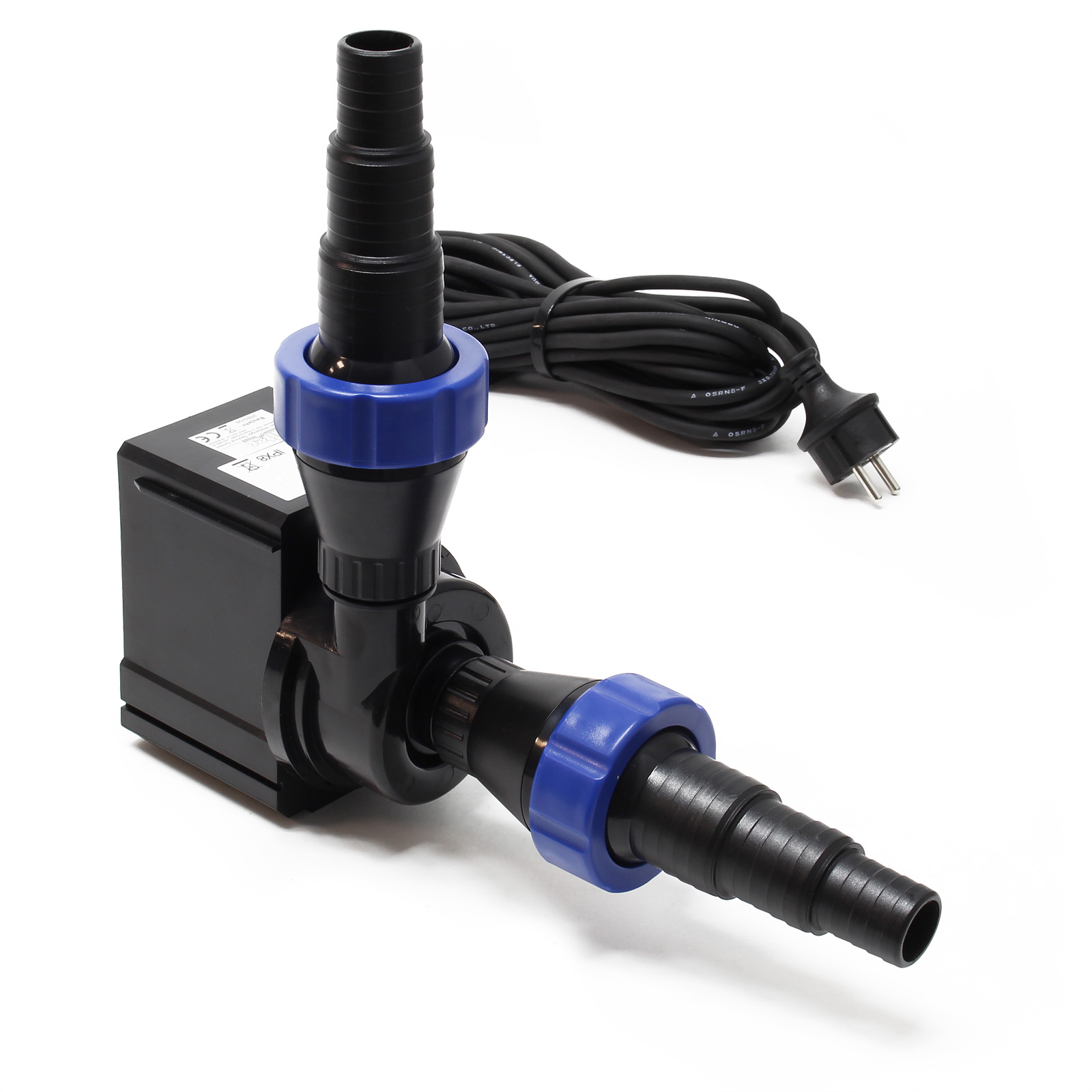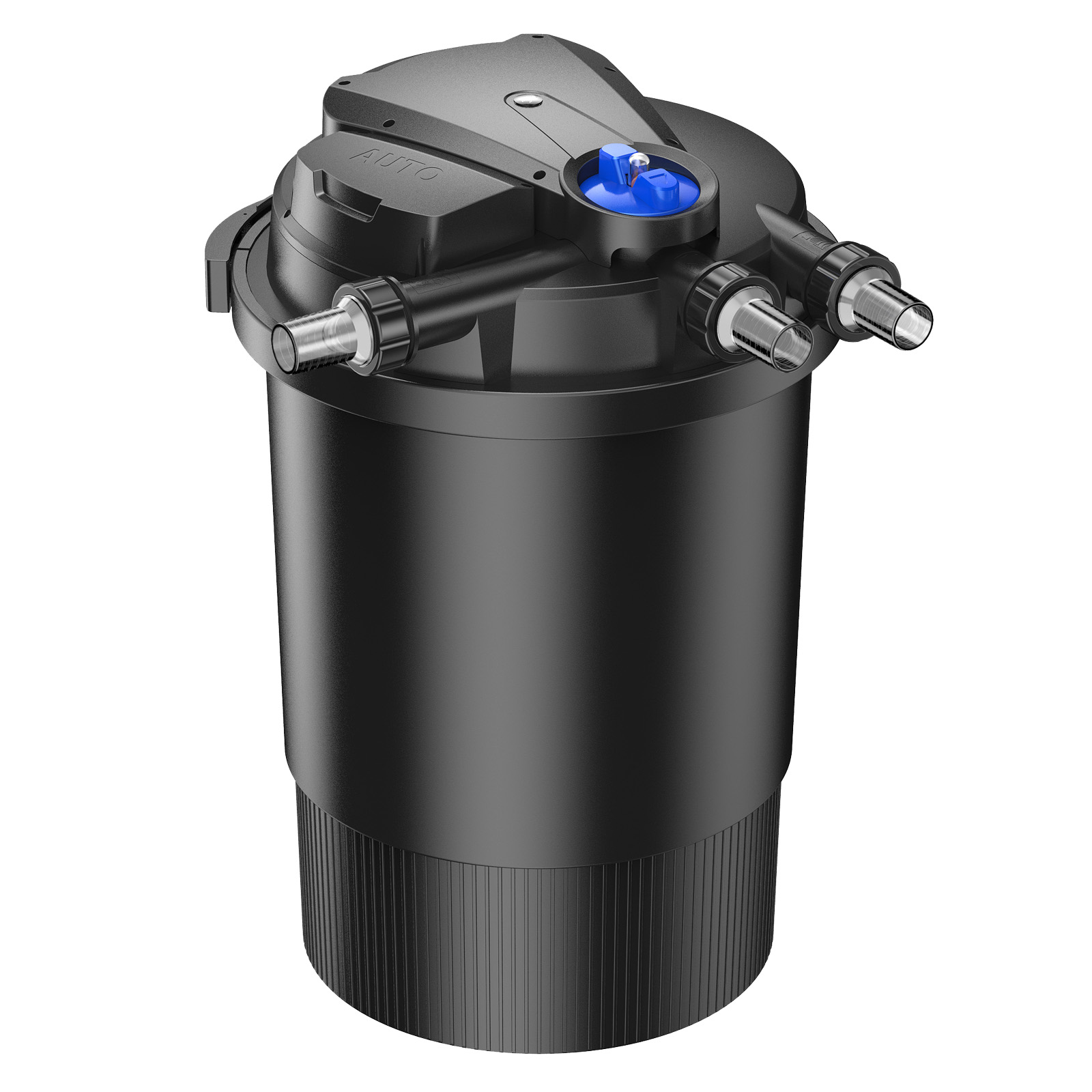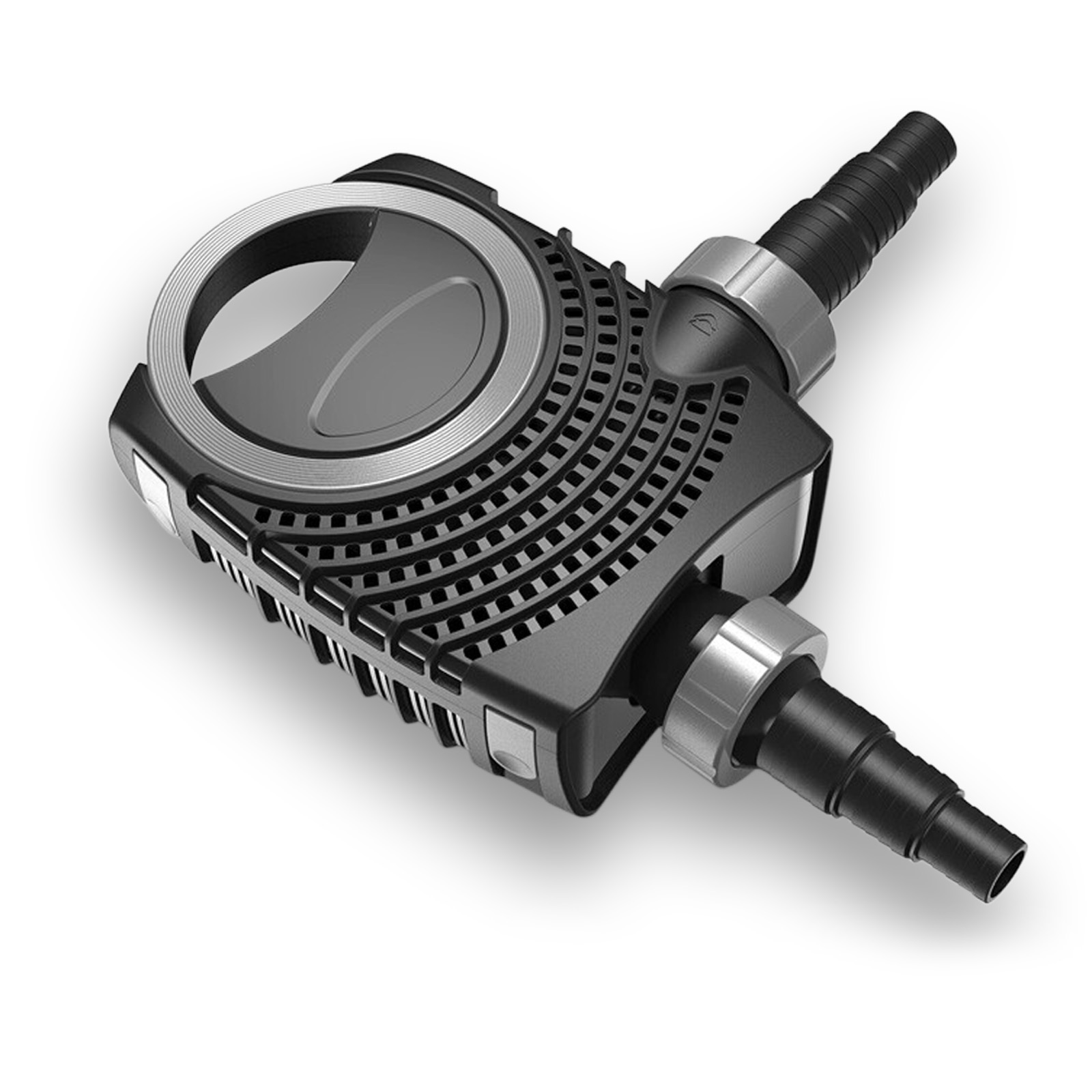Available, delivery time: 2 - 3 days
• Watercourse, pond filter and skimmer pump
• Max. pump capacity up to 10000l/h - 80W
• Max. pump head 6.0m
Available, delivery time: 2 - 3 days
• 3-chamber flow-through filter
• For ponds up to 90000 l
• Max. pump capacity 10000 l/h
Available, delivery time: 2 - 3 days
• Delivery capacity 2500 l/h – 45 Watts
• For ponds up to approx. 25 m²
Available, delivery time: 2 - 3 days
• Ponds up to approx. 100,000 l
• Height adjustable 650–850 mm
• Water level tolerance up to 100 mm
• Easy installation
Available, delivery time: 2 - 3 days
• Integrated UVC lamp with 55 W
• Pressure Pond Filters are easy to clean
• Max. pump capacity 12,000 l/h
Available, delivery time: 2 - 3 days
• 1-chamber flow-through filter
• For ponds up to 60,000 l
• Max. pump capacity 10,000 l/h
Available, delivery time: 2 - 3 days
• Integrated UVC lamp with 11 W
• Pressure Pond Filters are easy to clean!
• Max. pump capacity 6000 l/h
Available, delivery time: 2 - 3 days
• Integrated UVC lamp with 11 W
• Pressure Pond Filters are easy to clean
• Max. pump capacity 9000 l/h
Available, delivery time: 2 - 3 days
• Integrated UVC lamp with 18 W
• Pressure Pond Filters are easy to clean
• Max. pump capacity 10,000 l/h
Available, delivery time: 2 - 3 days
• Filter sponges, Japan mat, & Bio balls
• Thermometer & integrated 9-W UV-C clarifier
• Max. flow 6000 l/h
Available, delivery time: 2 - 3 days
• Integrated UVC lamp with 11 W
• Pressure Pond Filters are easy to clean
• Max. pump capacity 10,000 l/h
Available, delivery time: 2 - 3 days
• Delivery capacity 3000 l/h – 60 Watts
• For ponds up to 35 m²
Available, delivery time: 2 - 3 days
• Watercourse Pump, Pond Filter Pump, Skimmer
• Max. pump capacity up to 3000 l/h – 10 W
• Max. delivery head 2.0 m
Available, delivery time: 2 - 3 days
• Integrated UVC lamp with 36 W
• Pressure Pond Filters are easy to clean
• Max. pump capacity 12000 l/h
Available, delivery time: 2 - 3 days
• Size of dirt particles up to 4 mm
• Max. delivery head 2 m
Available, delivery time: 2 - 3 days
• Integrated UVC lamp with 11 W
• Pressure pond filters are easy to clean
• Max. pump capacity 10.000 l/h
Available, delivery time: 2 - 3 days
• Watercourse, pond filter and skimmer pump
• Max. pump capacity up to 8000l/h - 70W
• Max. pump head 5.6m
Available, delivery time: 2 - 3 days
• 60000 l to 90000 l pond volume
• Max. pump capacity 10000 l/h
Available, delivery time: 2 - 3 days
• Watercourse, pond filter and skimmer pump
• Max. pump capacity up to 12000l/h - 100W
• Max. pump head 6.5m
Available, delivery time: 2 - 3 days
• Filter sponges & Japan mat
• Turbidimeter
• Thermometer
• Max. flow 6000 l/h
Available, delivery time: 2 - 3 days
• Field of Application:
• Watercourse Pump, Pond Filter Pump
• Max. pump capacity up to 4000 l/h – 65 W
• Max. delivery head 3.0 m
Available, delivery time: 2 - 3 days
• Watercourse Pump, Pond Filter Pump, Skimmer
• Max. pump capacity up to 4500 l/h – 30 W
• Max. delivery head 4.0 m
Available, delivery time: 2 - 3 days
• Integrated UVC lamp with 55 W
• Pressure Pond Filters are easy to clean
• Max. pump capacity 12,000 l/h
• Fully automatic cleaning function
Available, delivery time: 2 - 3 days
• Watercourse, pond filter and skimmer pump
• Max. pump capacity up to 16000l/h - 140W
• Max. pump head 7.5m
Sauberes Wasser mit dem richtigen Teichfilter
Ein sauberer und gesunder Teich ist ohne das richtige Filtersystem kaum denkbar. Mit einem passenden Teichfilter-Set sorgen Sie dafür, dass Ihr Teich klar bleibt und optimale Lebensbedingungen für Fische und Pflanzen bestehen.
Achten Sie darauf, dass der Gartenteich-Filter zum Volumen Ihres Teichs passt, sei es ein Koiteich-Filter oder ein Filter für einen Teich mit Fischbesatz.

Der richtige Filter für Ihren Gartenteich
Es gibt eine große Auswahl an Filtern, daher ist eine sorgfältige Wahl entscheidend. Ein Teichfilter sollte zum Teichtyp (Natur-, Koi- oder Fischteich) und dessen Volumen passen. Achten Sie bei der Auswahl darauf, einen Teichfilter zu wählen, der den Ansprüchen Ihres Gartenteichs entspricht.
Übrigens finden Sie im Shop auch Teichfilter Ersatzteile. Diese können nützlich sein, um die Lebensdauer zu verlängern.
Filtersysteme im Überblick
Teichfiltersysteme bieten eine Vielzahl von Möglichkeiten, je nach Teichtyp und Anforderung. Die Herausforderung besteht darin, das passende Filtersystem auszuwählen, das nicht nur die spezifischen Anforderungen des Teiches erfüllt, sondern auch den individuellen Wünschen und Bedürfnissen des Teichbesitzers gerecht wird. Möglicherweise benötigt ein kleiner Zierteich mit wenigen Fischen eine andere Art von Filtration als ein großer Fischteich mit einer Vielzahl von Koi-Karpfen.
Darüber hinaus können auch ästhetische Aspekte eine Rolle spielen, besonders wenn der Teich ein zentrales Element des Gartens oder der Landschaftsgestaltung darstellt.

Druckteichfilter

Teichskimmer
.svg)
Filteranlage mit UVC Einheit

Teichpumpe mit Filter
Druckteichfilter
Druckteichfilter – die ideale Lösung für mittelgroße Teiche zwischen 3000 und 15.000 Litern. Diese leistungsstarken Filter sind perfekt auf die Bedürfnisse von Teichen dieser Größe abgestimmt und bieten eine effektive Filtration, um das Wasser klar und gesund zu halten.
Diese Art von Filter zeichnen sich durch ihre platzsparende Bauweise aus. Gerade in Gärten mit begrenztem Raum bieten sie eine kompakte Lösung, um die Wasseraufbereitung effizient zu gestalten, ohne dabei wertvollen Platz einzunehmen.
Durch die effektive Filtration tragen Druckteichfilter dazu bei, Wasserverschmutzung zu minimieren und ein gesundes Ökosystem im Teich aufrechtzuerhalten. Mit einer Vielzahl von Filtermedien und Technologien stehen Ihnen verschiedene Optionen zur Verfügung, um den individuellen Bedürfnissen Ihres Teiches gerecht zu werden. Egal, ob mechanische, biologische oder UV-Filtration – Sie haben die Wahl.
Beachten Sie jedoch bei der Installation unserer Druckteichfilter den Montagehinweis: Gemäß den VDE-Richtlinien müssen alle elektrischen Geräte mit einem Sicherheitsabstand von mindestens 2 Metern zum Gewässer installiert werden. Dies gewährleistet nicht nur Ihre Sicherheit, sondern auch die ordnungsgemäße Funktion des Filtersystems.

Teichskimmer für die Oberflächenreinigung
Ob Frühling, Sommer, Herbst oder Winter, Teichskimmer sind stets einsatzbereit, um die Oberfläche Ihres Teiches von Verschmutzungen zu befreien und ein klares, einladendes Wasser zu gewährleisten.
Der Teichskimmer übernimmt das Saubermachen für Sie, und das mit einer Effizienz, die beeindruckt. Von öligen Filmen bis hin zu Futterresten der Fische und Fetten – nichts entgeht dem Skimmer. Er arbeitet unaufhörlich daran, die Oberfläche Ihres Teiches von jeglichen Verunreinigungen zu befreien und so ein gesundes Ökosystem zu fördern.
Es gibt verschiedene Modelle auf dem Markt, die jeweils ihre eigenen Vorzüge und Funktionen bieten. Daher ist eine gründliche Vor-Recherche das A und O für eine zufriedene Nutzung. Ob manuellen Skimmer oder automatisierten Skimmer, mit oder ohne integrierte Pumpe – wählen Sie das Modell, das am besten zu Ihren Bedürfnissen und Ihrem Teich passt.
Bereit, Ihren Teich von der lästigen Oberflächenverschmutzung zu befreien und ihm ein strahlendes Erscheinungsbild zu verleihen? Erforschen Sie die Vielfalt der Teichskimmer und finden Sie den perfekten Begleiter für die Oberflächenreinigung Ihres Teiches.
Filteranlage mit UVC Einheit

Ein Teich ist nicht nur ein Wasserreservoir, sondern ein lebendiges Ökosystem, das gepflegt und unterstützt werden muss. Mit einer Filteranlage, die eine UVC Einheit integriert, wird dieses Ziel mühelos erreicht. Das Filtersystem arbeitet als Teich-Biofilter-System, das organische Schadstoffe abbaut und so das biologische Gleichgewicht im Teich stabilisiert. Das Ergebnis? Klares, gesundes Wasser, das zum Wachstum und zur Entwicklung einer vielfältigen Teichflora und -fauna beiträgt.
Eine weitere Stärke dieser Filteranlage ist ihre simple Handhabung und Wartung. Mit wenigen Handgriffen können Sie das Filtersystem reinigen und warten, um eine konstante Leistung sicherzustellen und langfristig Freude an Ihrem Teich zu haben.
Bevor Sie jedoch eine Filteranlage mit UVC Einheit kaufen, achten Sie unbedingt auf die maximale Förderleistung des Systems. Dies gewährleistet, dass Ihr Teich effizient gereinigt wird und das Filtersystem optimal arbeiten kann.
Teichpumpe mit Filter
Eine Filterpumpe bietet die perfekte Kombination aus Wasserpumpen- und Filterfunktion, um Ihren Teichkreislauf zu verbessern und das Wasser klar und sauber zu halten. Durch die kontinuierliche Filtration werden Schmutzpartikel und Verunreinigungen aus dem Wasser entfernt, während gleichzeitig eine effiziente Zirkulation gewährleistet wird. Das Ergebnis ist ein Teich, der nicht nur schön anzusehen ist, sondern auch ein optimales Lebensumfeld für Ihre Fische und Pflanzen bietet.
Die einfache Wartung und Reinigung der Teichpumpe mit Filter macht die Pflege Ihres Teiches zum Kinderspiel. Mit minimalen Aufwand können Sie das Filtersystem sauber halten und eine konstant hohe Leistung sicherstellen. Dadurch bleibt Ihr Teich in Topform und Sie können sich entspannt zurücklehnen und die Schönheit Ihres Gartenteiches genießen.
Entscheiden Sie sich für Qualität und Leistung, wenn es um die Pflege Ihres Teiches geht. Eine hochwertige Teichpumpe mit integriertem Filter ist eine Investition in die Gesundheit und Schönheit Ihres Teiches, die sich langfristig auszahlt.
Vorteile von Filteranlagen für Ihren Teich
Filteranlagen bieten entscheidende Vorteile. Sie sorgen für:

klares Wasser, das die Wasserqualität in Ihrem Teich aufrechterhält.

eine gesunde Lebensbedingungen für Fische und Pflanzen, indem sie Schadstoffe und Algen reduzieren.

und minimieren durch ihre Effizienz den Pflegeaufwand.
Zusammenfassung
Finden Sie Ihren Teichfilter, um den Anforderungen Ihres Teiches gerecht zu werden. Ein hochwertiger Teichfilter sorgt für sauberes Wasser und trägt zu einem gesunden Ökosystem bei. Zusätzlich sind Wiltec-Teichfilter-Ersatzteile erhältlich, um die Lebensdauer und Effizienz Ihrer Filteranlage zu verlängern.


